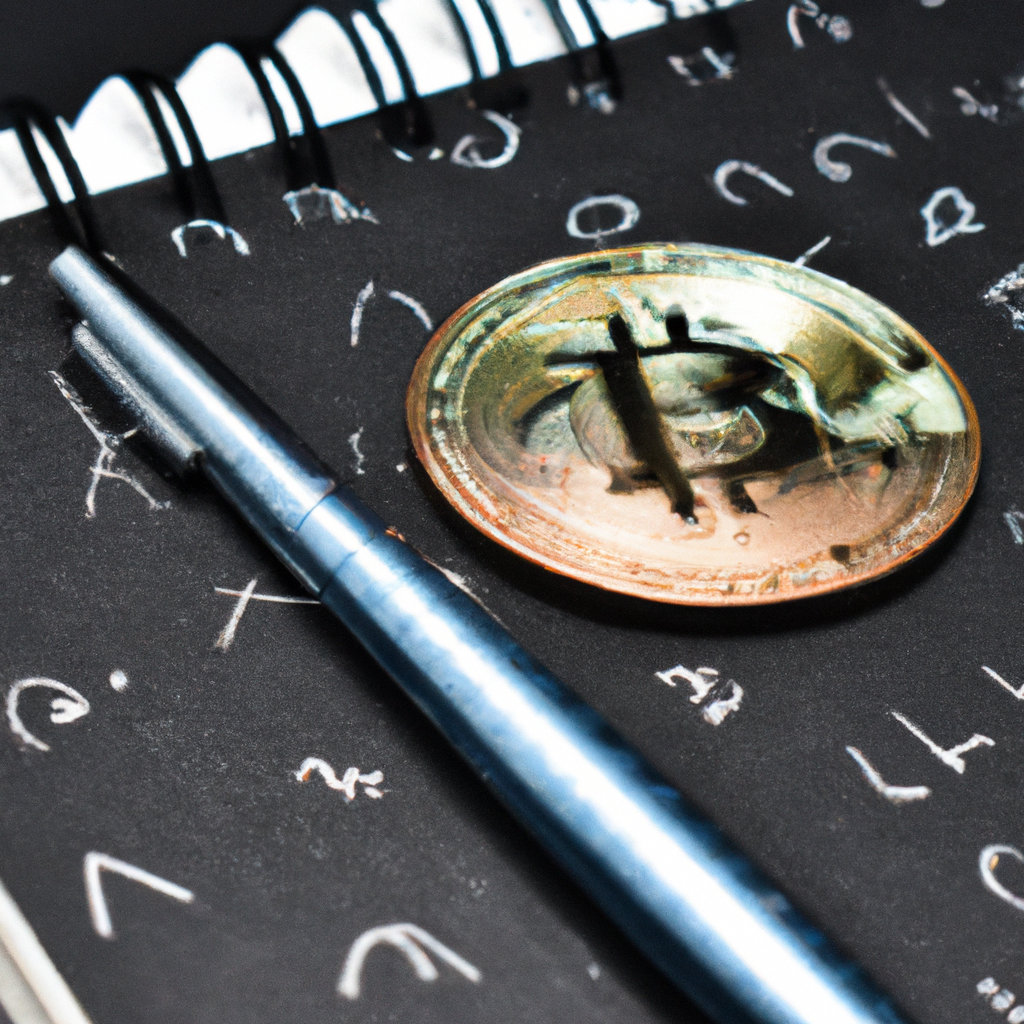XRP, the digital currency associated with Ripple, has been gaining significant popularity in the cryptocurrency world. However, amidst its growing success, concerns have been raised about the security of XRP. This article delves into the question, ‘Is XRP really secure?’ by exploring the various aspects of its security features, vulnerabilities, and the measures taken by Ripple to ensure the safety of its users’ funds. Let’s unravel the intricacies of XRP’s security to gain a better understanding of its reliability.
- 1. Introduction
- 2. XRP Security Features
- 2.1. Consensus Algorithm
- 2.2. Transaction Security
- 2.3. Decentralization
- 2.4. Secure Wallets
- 2.5. Encryption Techniques
- 3. Controversies and Concerns
- 3.1. Centralization Debate
- 3.2. Regulatory Challenges
- 3.3. Potential Vulnerabilities
- 3.4. Recent Security Incidents
- 3.5. Response from Ripple
1. Introduction
XRP, also known as Ripple, is a digital currency that has gained significant attention in the crypto world. As with any cryptocurrency, one of the key concerns for investors and users is security. In this article, we will explore the question: Is XRP really secure? We will delve into the various security measures implemented by Ripple and assess the overall safety of using XRP as a digital asset. Let’s dive into the details and evaluate the security aspects of XRP.
1.1. What is XRP?
XRP is a digital asset and cryptocurrency that was created by Ripple Labs Inc. in 2012. It is designed to facilitate fast and secure transactions on the Ripple payment protocol. XRP serves as a bridge currency for transferring value between different fiat currencies, making it a popular choice for cross-border transactions.
Unlike traditional cryptocurrencies like Bitcoin, XRP does not rely on a decentralized blockchain network. Instead, it uses a consensus algorithm called the Ripple Protocol Consensus Algorithm (RPCA). This algorithm ensures that transactions are validated and confirmed quickly, making XRP one of the fastest cryptocurrencies in terms of transaction speed.
In terms of security, XRP is considered to be highly secure. The Ripple network has never been hacked since its inception, and the XRP Ledger has proven to be resistant to attacks. Additionally, XRP implements various security measures, such as encryption and multi-signature functionality, to protect users’ funds.
Overall, XRP offers a secure and efficient solution for transferring value globally. Its speed, reliability, and robust security features make it a promising digital asset for individuals and businesses alike.
1.2. Importance of Security in Cryptocurrencies
In recent years, cryptocurrencies, such as XRP, have gained immense popularity and have revolutionized the way we perceive and transact with digital assets. With the rise in the usage and adoption of cryptocurrencies, ensuring the security of these digital currencies has become a paramount concern for both individual investors and institutional players.
The importance of security in cryptocurrencies, including XRP, cannot be understated. Given the decentralized nature of cryptocurrencies and the absence of a central authority or governing body, it is crucial to implement robust security measures to protect against various threats and vulnerabilities.
Cryptocurrencies are built on blockchain technology, which offers transparency, immutability, and decentralization. However, this very nature also makes them susceptible to potential security risks. Hackers and cybercriminals are constantly devising new techniques to exploit vulnerabilities in cryptocurrency networks and steal digital assets.
XRP, being one of the top cryptocurrencies in terms of market capitalization, has become a target for malicious actors. Therefore, it is essential to understand the security features and measures implemented by XRP to evaluate its level of security.
This article aims to explore the importance of security in cryptocurrencies, specifically focusing on XRP. We will delve into the various security aspects, such as encryption algorithms, network consensus mechanisms, and protective measures taken by the XRP ecosystem. By examining these factors, we can gain insights into the security measures in place for XRP and determine if it is truly secure.
1.3. Purpose of the Article
The purpose of this article is to examine the security of XRP, a digital currency that is often touted for its speed and efficiency in cross-border transactions. With the increasing popularity of cryptocurrencies and the rise of blockchain technology, it is crucial to evaluate the level of security provided by different digital assets. In this article, we will explore the various security measures implemented by XRP and assess whether it truly offers a secure platform for users to conduct their transactions.
2. XRP Security Features
XRP, the digital asset and cryptocurrency developed by Ripple, boasts a range of security features that make it a highly secure option for users. With its advanced technology and decentralized network, XRP offers a level of security that sets it apart from many other cryptocurrencies.
One of the key security features of XRP is its use of a consensus algorithm called the XRP Ledger. This algorithm ensures that transactions on the network are validated and agreed upon by a majority of participants, making it extremely difficult for any single entity to manipulate or compromise the system.
Additionally, XRP employs a unique feature called the Escrow feature, which allows users to secure their funds by locking them up for a specified period of time. This feature ensures that the funds are only accessible after the predetermined time has elapsed, providing an extra layer of security against unauthorized access or theft.
Furthermore, XRP incorporates robust encryption techniques to protect user data and transactions. The use of encryption ensures that sensitive information, such as wallet addresses and transaction details, remains secure and private.
Overall, XRP’s security features make it a reliable and trustworthy cryptocurrency option. Users can have confidence in the safety of their funds and transactions when utilizing XRP for their financial needs.
2.1. Consensus Algorithm
XRP, the digital asset associated with the Ripple payment protocol, is often touted for its security features. One of the key elements that ensures the security of XRP is its consensus algorithm. Consensus algorithms play a crucial role in maintaining the integrity and security of blockchain networks. XRP utilizes a unique consensus algorithm called the XRP Ledger Consensus Protocol.
The XRP Ledger Consensus Protocol differs from traditional proof-of-work (PoW) algorithms used by cryptocurrencies like Bitcoin. Instead of relying on miners to validate transactions through complex mathematical calculations, XRP utilizes a consensus algorithm that relies on a network of trusted validators.
These trusted validators continuously compare their transaction lists and agree on a single, shared version of the ledger. This consensus process ensures that only valid and legitimate transactions are included in the XRP ledger, while any attempts at tampering or double-spending are swiftly detected and rejected.
This consensus algorithm provides several security benefits for XRP. Firstly, it eliminates the need for energy-intensive mining operations, making XRP more environmentally friendly. Secondly, it enables fast and efficient transaction validation, with settlement times averaging around 3-5 seconds. This makes XRP suitable for real-time payments and financial transactions.
Furthermore, the XRP Ledger Consensus Protocol enhances the security of XRP by providing resistance to censorship and network attacks. The decentralized nature of the consensus algorithm ensures that no single entity can control the network or manipulate transactions. Additionally, the use of digital signatures and cryptographic techniques adds an extra layer of security to the XRP ledger.
In conclusion, XRP’s consensus algorithm, the XRP Ledger Consensus Protocol, plays a vital role in ensuring the security of the digital asset. Its unique approach to consensus, energy efficiency, fast transaction validation, and resistance to censorship make XRP a secure and reliable cryptocurrency.
2.2. Transaction Security
When it comes to transaction security, XRP boasts a range of robust features that help ensure the safety and integrity of its network. These security features are designed to protect against various types of threats and attacks, providing users with peace of mind when using XRP for their transactions.
One of the key security features of XRP is its consensus algorithm, known as the XRP Ledger. This algorithm ensures that all transactions on the network are validated and agreed upon by a majority of trusted participants, known as validators. This decentralized consensus mechanism prevents any single entity from controlling the network and helps maintain the integrity of transactions.
Another important security aspect of XRP is its use of cryptographic techniques. XRP utilizes a digital signature system to verify the authenticity and integrity of transactions. Each transaction is signed with a unique cryptographic key, making it virtually impossible for unauthorized parties to tamper with or alter the transaction data.
Furthermore, XRP employs a high level of encryption to protect sensitive information during transmission. All communications between XRP wallets and the network are encrypted, ensuring that data remains confidential and secure. This encryption prevents unauthorized access to transaction details and provides an additional layer of security.
In addition to these core security features, XRP also benefits from continuous monitoring and improvement by the XRP development team. Regular security audits and updates are conducted to address any potential vulnerabilities and enhance the overall security of the network.
Overall, XRP demonstrates a strong commitment to transaction security through its robust consensus algorithm, cryptographic techniques, encryption measures, and ongoing development efforts. With these security features in place, XRP users can have confidence in the safety and reliability of their transactions.
2.3. Decentralization
Decentralization is a fundamental aspect of blockchain technology and plays a crucial role in determining the security of a cryptocurrency like XRP. In the case of XRP, decentralization refers to the distribution of control and decision-making power across multiple participants in the network, rather than being controlled by a single entity or authority.
XRP utilizes a unique consensus algorithm called the XRP Ledger Consensus Protocol to ensure decentralization. Unlike traditional proof-of-work (PoW) or proof-of-stake (PoS) mechanisms, XRP’s consensus algorithm does not require a large number of miners or validators to secure the network.
The XRP Ledger operates on a distributed network of independent servers, known as validators, which validate and agree on the transactions and the state of the ledger. These validators are operated by various institutions, including Ripple, but they are not under the sole control of Ripple. This distributed network of validators helps maintain the decentralization of the XRP Ledger.
Furthermore, XRP has a unique feature called the Unique Node List (UNL). Each validator maintains its own UNL, which is a list of trusted validators that it considers reliable and honest. Validators continuously communicate with each other to reach a consensus on the state of the ledger. By having a diverse and decentralized UNL, XRP ensures that no single entity can control the network or manipulate transactions.
Overall, XRP’s security features, including its decentralized consensus mechanism and the Unique Node List, contribute to its robustness and resilience against attacks. While no system is entirely immune to security risks, XRP’s design aims to minimize centralization and enhance security, making it a secure cryptocurrency for various use cases.
2.4. Secure Wallets
Secure Wallets for XRP:
When it comes to ensuring the security of your XRP holdings, choosing a reliable and secure wallet is essential. There are several wallet options available in the market, each with its own set of security features. Here are some of the best wallets known for their robust security measures.
1. Ledger Nano X: The Ledger Nano X is a hardware wallet that offers top-notch security for storing your XRP. It utilizes a secure chip to protect your private keys and features a built-in screen for verifying transactions. With its advanced encryption technology, the Ledger Nano X ensures the safety of your XRP funds.
2. Toast Wallet: Toast Wallet is a free and open-source software wallet that provides a secure way to store your XRP. It offers features like encryption, pin protection, and backup options to safeguard your funds. Toast Wallet also allows you to remain in control of your private keys, ensuring complete security and ownership.
3. Exodus Wallet: Exodus Wallet is a popular software wallet that supports multiple cryptocurrencies, including XRP. It provides a user-friendly interface and incorporates various security measures like password protection and backup options. Exodus Wallet also offers the capability to manage and exchange your XRP securely.
4. Atomic Wallet: Atomic Wallet is a decentralized wallet that offers a high level of security for storing XRP. It uses atomic swaps and encryption techniques to ensure the safety of your assets. With its intuitive interface and robust security features, Atomic Wallet provides a convenient and secure solution for managing your XRP holdings.
By choosing one of these secure wallets, you can have peace of mind knowing that your XRP is protected against potential threats and unauthorized access. It is crucial to thoroughly research and compare different wallet options to find the one that best suits your security needs.
2.5. Encryption Techniques
Encryption Techniques
XRP incorporates robust encryption techniques to ensure the security of its network and transactions. These encryption techniques play a vital role in protecting sensitive information and preventing unauthorized access.
1. Public Key Cryptography: XRP utilizes public key cryptography, which involves the use of a public key to encrypt data and a corresponding private key to decrypt it. This cryptographic technique ensures that only the intended recipient can access the encrypted information.
2. Hash Functions: XRP employs various hash functions to verify the integrity of data and prevent tampering. Hash functions are algorithms that convert input data into a fixed-size string of characters, known as a hash value. By comparing hash values before and after transmission, XRP can detect any alterations or modifications in the data.
3. Secure Hash Algorithm (SHA): XRP uses secure hash algorithms, such as SHA-256, to provide an additional layer of security. SHA-256 generates a unique hash value for each input, making it extremely difficult for attackers to reverse-engineer the original data.
4. Consensus Protocol: XRP’s consensus protocol, known as the XRP Ledger, ensures the security and integrity of transactions. It relies on a decentralized network of validators that collectively agree on the validity of transactions. This consensus mechanism prevents the possibility of double-spending and maintains the overall security of the XRP network.
XRP Security Features
In addition to encryption techniques, XRP incorporates several security features to safeguard its users’ funds and mitigate potential risks.
1. Digital Signatures: XRP employs digital signatures to verify the authenticity and integrity of transactions. Each transaction is signed with the sender’s private key, and the signature is verified using the corresponding public key. This ensures that transactions cannot be tampered with or forged.
2. Multi-Signature Support: XRP supports multi-signature functionality, allowing multiple parties to jointly authorize transactions. This feature enhances security by requiring the consensus of multiple authorized participants before a transaction can be executed.
3. Account Reserves: XRP has a built-in mechanism that requires account holders to maintain a minimum balance, known as an account reserve. This reserve helps prevent spam and malicious activities on the network by imposing a cost on potential attackers.
4. Regular Security Audits: The XRP network undergoes regular security audits conducted by independent third-party firms. These audits assess the overall security posture of the network, identify vulnerabilities, and recommend necessary improvements. This proactive approach ensures continuous enhancement of XRP’s security features.
Overall, XRP incorporates advanced encryption techniques, security features, and a robust consensus protocol to provide a secure and trustworthy platform for transactions. While no system is completely immune to security risks, XRP’s comprehensive approach to security makes it a reliable choice for users seeking a secure digital asset.
3. Controversies and Concerns
Controversies and Concerns
One of the main controversies surrounding XRP is its centralized nature. Critics argue that XRP is controlled by a single entity, Ripple, which goes against the principles of decentralization that cryptocurrencies are typically associated with. This has led to concerns about the security and integrity of the XRP network, as well as the potential for manipulation and censorship.
Another concern is the ongoing legal battles faced by Ripple. The U.S. Securities and Exchange Commission (SEC) has filed a lawsuit against Ripple, alleging that the company conducted an unregistered securities offering through the sale of XRP. This has raised questions about the regulatory status of XRP and its potential impact on the cryptocurrency industry as a whole.
Furthermore, some critics argue that XRP’s consensus algorithm, known as the XRP Ledger, is not as secure as other popular cryptocurrencies like Bitcoin and Ethereum. They claim that the reliance on a small number of trusted validators makes the network more vulnerable to attacks and compromises its overall security.
In addition, the large supply of XRP tokens held by Ripple has also raised concerns. Skeptics argue that the significant control that Ripple has over the token supply could potentially lead to market manipulation and price volatility.
Overall, while XRP has gained significant popularity and adoption, there are valid controversies and concerns surrounding its security, centralization, legal battles, consensus algorithm, and token supply that should be considered by investors and users.
3.1. Centralization Debate
The centralization debate surrounding XRP has been a topic of controversy and concern within the cryptocurrency community. While XRP is often praised for its fast transaction speeds and low fees, some argue that its centralized nature goes against the principles of decentralization that many cryptocurrencies strive to achieve.
One of the main points of contention is the distribution of XRP tokens, as the majority of them are held by Ripple, the company behind XRP. Critics argue that this concentration of power could potentially lead to manipulation of the market and control over the currency.
Furthermore, Ripple’s influence over the XRP network has raised concerns about censorship resistance and the overall security of the system. Unlike other cryptocurrencies like Bitcoin, where transactions are validated by a distributed network of miners, XRP relies on a consensus algorithm that involves a select group of trusted validators. This has led to accusations of centralization and vulnerability to potential attacks or manipulation.
Supporters of XRP argue that Ripple’s control over the currency is necessary for its adoption and integration into the traditional financial system. They believe that Ripple’s partnerships with banks and financial institutions can bring stability and widespread use to XRP, ultimately benefiting its holders.
The centralization debate surrounding XRP remains a contentious issue, with valid arguments on both sides. As the cryptocurrency landscape continues to evolve, it will be interesting to see how the debate plays out and what impact it may have on the future of XRP.
3.2. Regulatory Challenges
Regulatory Challenges
The use of XRP, a popular cryptocurrency, has raised several regulatory challenges. One of the main concerns revolves around the classification of XRP as a security or a commodity. The Securities and Exchange Commission (SEC) in the United States has been particularly cautious in providing a clear stance on this matter.
Another regulatory challenge is related to the cross-border nature of XRP transactions. As cryptocurrencies are not bound by traditional borders, it becomes difficult for regulatory bodies to enforce consistent rules and regulations. This lack of global regulatory framework often leads to concerns regarding money laundering, terrorist financing, and other illicit activities.
Furthermore, the decentralized nature of XRP poses challenges in terms of accountability and control. Unlike traditional financial systems, cryptocurrencies do not rely on a central authority, which makes it harder to regulate and monitor their usage.
In conclusion, the regulatory challenges surrounding XRP are multifaceted. From classification issues to cross-border transactions and decentralization, there are various concerns that need to be addressed to ensure the secure and responsible use of XRP.
3.3. Potential Vulnerabilities
XRP, like any other digital asset, is not immune to potential vulnerabilities. While it is considered to be a secure cryptocurrency, there are certain factors that can pose risks to its security.
One potential vulnerability is the centralization of XRP. Unlike other decentralized cryptocurrencies like Bitcoin or Ethereum, XRP is controlled by a single entity called Ripple Labs. This centralization raises concerns about the possibility of a single point of failure, where any attack or compromise on Ripple Labs could potentially affect the security of XRP.
Another controversy surrounding XRP is its relationship with Ripple Labs. Some argue that the close ties between the two entities create a conflict of interest and raise questions about the decentralization and independence of XRP. This has led to debates within the cryptocurrency community about the true nature of XRP’s security and its alignment with the principles of decentralized finance.
Furthermore, there have been concerns regarding the regulatory environment surrounding XRP. The ongoing legal battle between Ripple Labs and the U.S. Securities and Exchange Commission (SEC) has created uncertainty about the future of XRP. This regulatory scrutiny has raised doubts about the long-term security and stability of XRP as a digital asset.
It is important to note that despite these controversies and concerns, XRP has implemented various security measures to mitigate potential vulnerabilities. Ripple Labs has taken steps to enhance the security of the XRP Ledger and protect against attacks. Additionally, XRP’s consensus algorithm, known as the XRP Ledger Consensus Protocol, provides a level of security by requiring the agreement of a majority of participants in the network.
In conclusion, while XRP is considered to be a secure cryptocurrency, there are certain potential vulnerabilities and controversies associated with it. The centralization of XRP, its relationship with Ripple Labs, and the regulatory environment are all factors that can impact its security. However, XRP has implemented measures to address these concerns and enhance its security.
3.4. Recent Security Incidents
In recent years, XRP, the digital currency associated with the Ripple network, has faced its fair share of security incidents. These incidents have caused controversies and raised concerns among investors and users alike.
One notable security incident involving XRP occurred in 2019 when a cryptocurrency exchange called GateHub was hacked. The hackers managed to steal approximately $10 million worth of XRP from the exchange’s users. This incident highlighted the vulnerabilities of centralized exchanges and the potential risks associated with holding XRP on such platforms.
Another security incident that shook the XRP community was the discovery of a vulnerability in the XRP Ledger in 2020. This vulnerability allowed malicious actors to manipulate the ledger’s internal data and potentially manipulate transactions. Although the vulnerability was quickly patched by the Ripple team, it raised concerns about the overall security of the XRP network.
These security incidents have sparked debates about the level of security provided by the XRP network. While some argue that these incidents are isolated cases and do not reflect the overall security of XRP, others remain skeptical and question the robustness of the network’s security measures.
In conclusion, XRP has experienced various security incidents in recent years, leading to controversies and concerns within the cryptocurrency community. It is essential for investors and users to stay informed about these incidents and evaluate the overall security of the XRP network before making any investment decisions.
3.5. Response from Ripple
Ripple, the company behind XRP, has addressed several controversies and concerns regarding the security of XRP. In response to these issues, Ripple has implemented various measures to ensure the safety and integrity of the XRP network.
One major concern raised by critics is the centralization of XRP, as Ripple holds a significant amount of XRP tokens. However, Ripple has consistently reiterated its commitment to decentralization and has taken steps to gradually reduce its XRP holdings.
Another controversy revolves around the consensus algorithm used by XRP, called the XRP Ledger. Some critics argue that it is not as secure as other blockchain technologies. In response to this, Ripple highlights the robust security features of the XRP Ledger, including its unique consensus mechanism that allows for faster transaction confirmations.
Ripple has also proactively addressed concerns related to potential vulnerabilities or attacks on the XRP network. The company has a dedicated team of security experts who continuously monitor and assess the network for any potential threats. Additionally, Ripple collaborates with external security firms to conduct regular audits and penetration testing.
Overall, Ripple acknowledges the controversies and concerns surrounding XRP’s security but emphasizes its commitment to addressing these issues and ensuring the utmost security for its users and the XRP ecosystem.
Conclusion
In conclusion, XRP has proven to be a secure cryptocurrency with its advanced blockchain technology and robust security measures. Its decentralized network and consensus algorithm provide a high level of protection against fraud and unauthorized access. With continuous advancements in security protocols, XRP is constantly improving its security features to ensure the safety of user transactions. Overall, XRP can be considered as one of the secure cryptocurrencies available in the market today.






5 Comments
Nadia Samuel
6 months agoHey there, Mr. [object Object]! So youre telling me that XRP cryptocurrency offers some next-level security? Well, color me intrigued! 🤔 I mean, Ive seen my fair share of vulnerabilities in life, like accidentally using the wrong emoji in a text and causing a total misunderstanding. But if XRP has got measures in place to protect us users, Im all ears! 🙉 Lets dive into this crypto realm and see if its got what it takes to keep us safe from those sneaky cyber villains! 💪🔒
Penelope Hardy
6 months agoHey there! 😄 I must say, Im quite intrigued by the level of security provided by XRP cryptocurrency and its underlying technology. Its always important to understand the vulnerabilities that might exist and the steps taken to safeguard user protection. Cant wait to dive into this and learn more! 💪🔒
Patrica Naiditch
6 months agoHaha, well, isnt this post just the XRP of excitement?! 🚀 I mean, who wouldnt want to dive into the depths of security in cryptocurrency? Its like exploring the Bermuda Triangle, but with digital coins instead of disappearing ships! 😜 But seriously, its awesome to see how XRP is tackling potential vulnerabilities and ensuring user protection. Lets hope they have more tricks up their sleeve than a magician at a kids birthday party! 🎩✨ So, bring on the knowledge bombs and lets see how XRP is securing our crypto dreams! 💪🔒
Rosalind Deirdra
6 months agoThe level of security provided by the XRP cryptocurrency and its underlying technology is a crucial aspect to consider for potential users. It is essential to thoroughly explore any potential vulnerabilities and understand the measures implemented to ensure user protection.
With regards to XRP, the underlying technology utilizes a decentralized network called the XRP Ledger, which employs a consensus algorithm known as the Ripple Protocol Consensus Algorithm (RPCA). This algorithm is designed to validate and authenticate transactions in a trustworthy manner, ensuring the security and integrity of the XRP network.
One notable aspect of the XRP Ledger is its inherent resistance to malicious activity, such as 51% attacks. This is achieved through the consensus process, which involves a network of trusted validators that continuously validate and agree upon the state of the ledger. The distributed nature of these validators ensures that no single entity can gain control over the network, thereby minimizing the risk of manipulation or fraudulent behavior.
Moreover, XRP incorporates various security measures to protect user assets and transactions. This includes the utilization of cryptographic techniques to secure wallet addresses and private keys, preventing unauthorized access to funds. Additionally, XRP employs advanced encryption algorithms to safeguard sensitive data, ensuring secure transmission of information across the network.
To further enhance security, the XRP ecosystem places great emphasis on compliance with regulatory frameworks. By collaborating with financial institutions and adhering to strict industry standards, XRP aims to ensure that its users operate within a secure and regulated environment, mitigating potential risks associated with illicit activities.
In summary, the XRP cryptocurrency and its underlying technology prioritize user security through a combination of decentralized consensus, robust cryptographic techniques, and compliance measures. By constantly evaluating and addressing vulnerabilities, XRP strives to provide a high level of protection for its users, fostering trust and confidence in its ecosystem.
Anestassia Madelyn
6 months agoThank you for sharing this informative post on the true level of security offered by XRP cryptocurrency and its underlying technology. It is essential for users to be aware of potential vulnerabilities and the measures taken to ensure their protection.
Ensuring the security of any cryptocurrency is of utmost importance, and XRP has made significant efforts in this regard. The technology behind XRP utilizes a decentralized ledger called the XRP Ledger (XRPL), which employs a consensus algorithm known as the Ripple Protocol Consensus Algorithm (RPCA). This algorithm ensures the integrity and security of transactions on the network.
One potential vulnerability often discussed in the cryptocurrency space is the possibility of a 51% attack. However, XRP is not susceptible to such attacks as it does not rely on mining or Proof-of-Work (PoW) consensus. Instead, it employs a unique consensus mechanism that does not incentivize malicious actors to gain control of the network.
Additionally, XRP has a robust security framework in place, which includes:
1. Secure and transparent validation: The XRPL validators are chosen through a decentralized process, ensuring that no single entity has control over the network. Validators review and validate transactions, promoting a high level of security and reliability.
2. Consensus process: The RPCA consensus algorithm utilized by XRP requires 80% agreement among the participating validators to validate transactions. This ensures that any malicious activity is highly unlikely to succeed, providing users with an added layer of protection.
3. Continuous monitoring and improvement: The XRP development team actively monitors the network for any potential vulnerabilities and regularly releases updates and improvements to enhance security.
It is worth mentioning that no system is entirely immune to security risks, and XRP is no exception. However, the measures implemented by the XRP community and development team demonstrate their commitment to safeguarding user funds and ensuring the security of the network.
In conclusion, XRP cryptocurrency and its underlying technology offer a robust level of security. Through the utilization of the XRPL and RPCA consensus algorithm, as well as the implementation of various security measures, XRP aims to provide users with a secure and reliable platform for transactions.